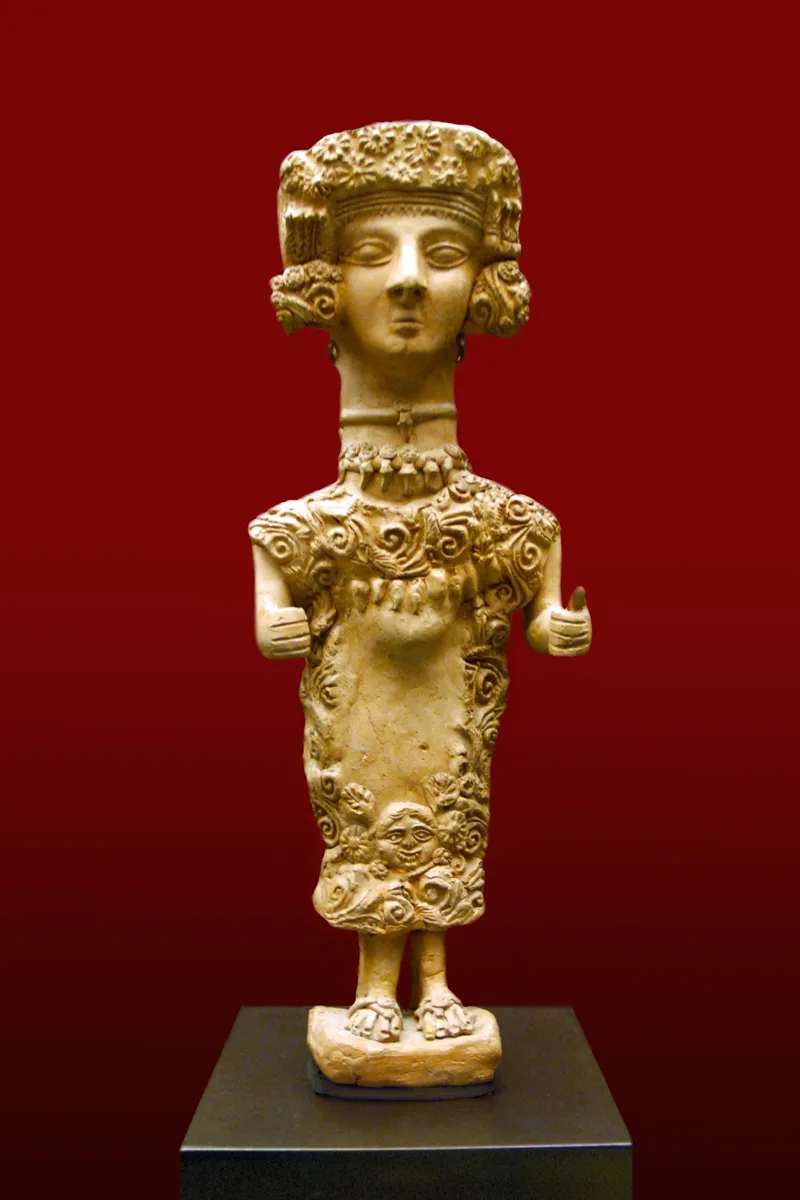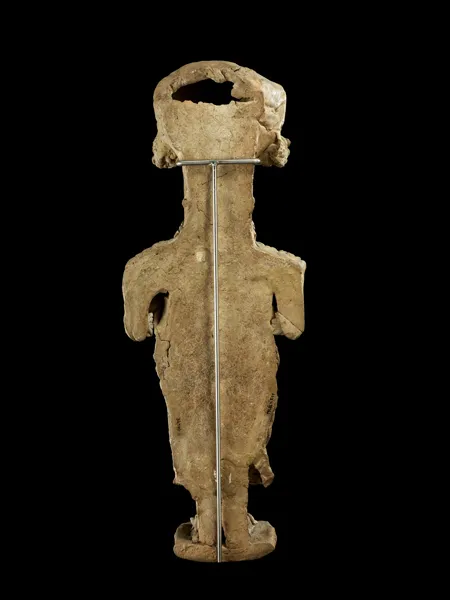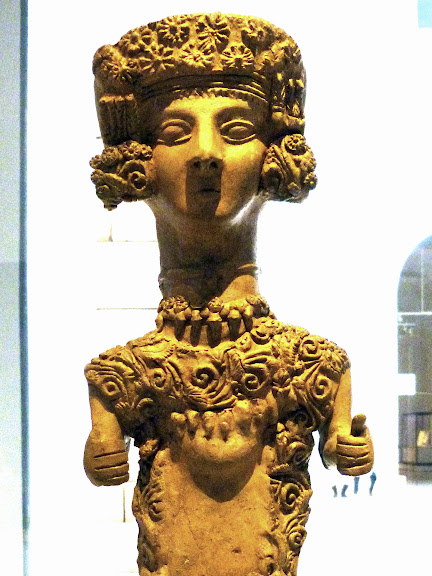The Lady of Ibiza is a striking ceramic figure dating to approximately 300 BC. Uncovered in the necropolis of Puig des Molins on the island of Ibiza in the Mediterranean, this 47 cm tall sculpture has become an important artifact, providing insight into the religious and artistic traditions of the Carthaginian civilization.
Unveiling the Goddess Tanit
The Lady of Ibiza is widely believed to represent Tanit, the principal goddess of Carthage. Known for her associations with fertility, motherhood, and protection, Tanit was central to the religious practices of the Carthaginian people. The figure, which is a notable example of Carthaginian craftsmanship, showcases the importance of religious iconography in Carthage. Tanit’s depiction in the form of a human-like sculpture highlights the significance of divine worship and the role of deities in everyday life.

Expert Craftsmanship and Symbolism
The figure is crafted from clay using a mold technique, a method that was common in ancient cultures for mass-producing religious and ceremonial objects. The Lady of Ibiza is further adorned with gold leaf, a luxurious touch that likely indicates its ceremonial or religious significance. Gold was often used in ancient artifacts to symbolize divine or sacred properties, and its use here suggests that this figure was meant for high ceremonial purposes, possibly as a ritual offering or for use in funerary contexts.

Religious and Funerary Context
It is believed that the Lady of Ibiza served a role in religious or funerary contexts. Given the prominence of Tanit in Carthaginian religion, the figure might have been an offering to the goddess or used to invoke her protection in the afterlife. The necropolis of Puig des Molins, where the figure was found, is one of the most significant Carthaginian burial sites and has yielded numerous artifacts that shed light on the culture, beliefs, and burial practices of this ancient civilization. Such artifacts suggest that Carthaginians placed great importance on ensuring protection and favor from the gods, especially in death.

Carthaginian Influence in the Mediterranean
The Carthaginian civilization, though often overshadowed by the rise of Rome, was a dominant force in the Mediterranean for centuries. Known for their maritime prowess and vast trade networks, the Carthaginians left a lasting impact on the cultures and societies they interacted with. The Lady of Ibiza is an example of how Carthaginian culture extended beyond North Africa, with their influence reaching as far as the island of Ibiza in the Mediterranean. This region, located at the crossroads of several ancient civilizations, was a significant center for trade, culture, and religious exchange, where Carthaginian practices blended with local traditions.
Preserving History: The National Archaeological Museum of Spain
Today, the Lady of Ibiza is housed at the National Archaeological Museum of Spain in Madrid, where it continues to captivate visitors with its intricate craftsmanship and rich historical significance. The figure not only offers a glimpse into the religious practices of the Carthaginians but also serves as a testament to the advanced artistic techniques and cultural interactions that took place during this fascinating period of Mediterranean history.
The Lady of Ibiza remains one of the most remarkable and significant artifacts from the ancient Carthaginian world, providing invaluable insight into the spiritual and artistic traditions of a civilization that helped shape the course of Mediterranean history.

